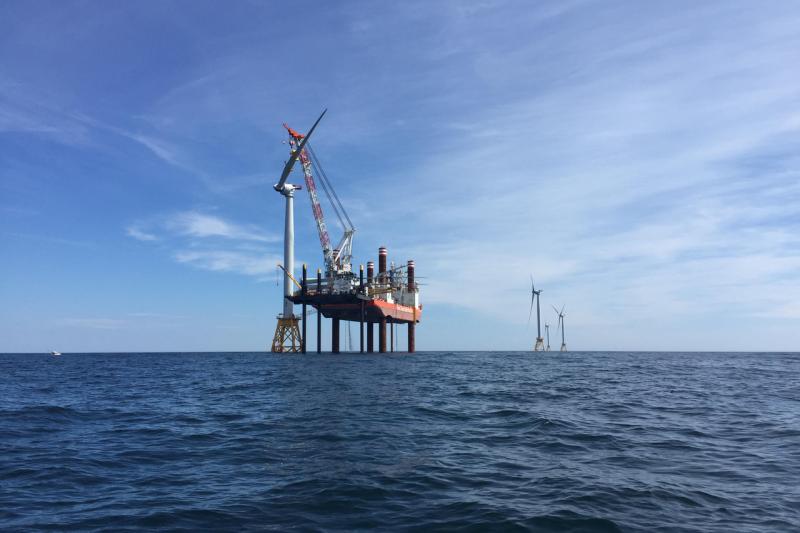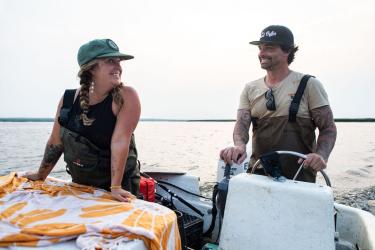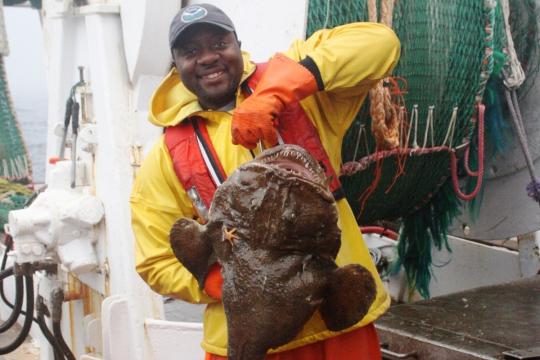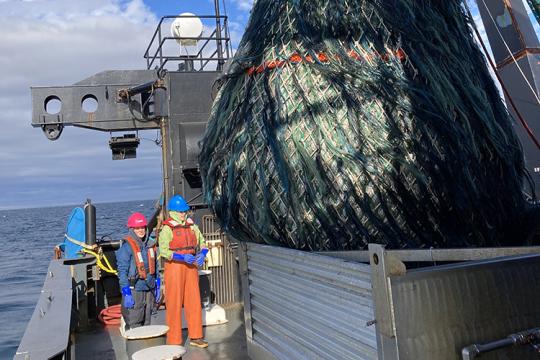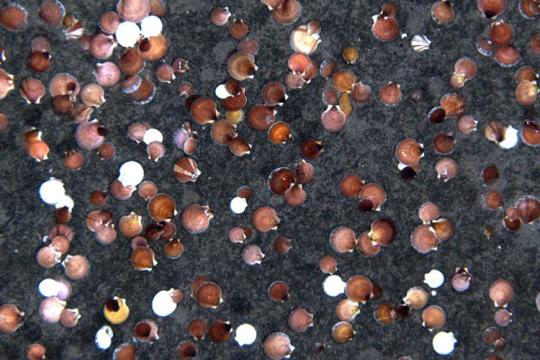Lisa Methratta is the fishery biologist for the Northeast Fisheries Science Center’s offshore wind team. She brings academic training and professional experience in ecological research to bear on the study of offshore wind interactions with fish and fisheries.
“I am interested in designing new approaches for studying the ecological effects of offshore wind in marine ecosystems,” says Methratta, who previously worked for NOAA Fisheries as the national aquaculture liaison in the Office of Protected Resources. One of her tasks there was to lead an agency-wide working group examining the risks to protected species posed by offshore aquaculture.
“Wind power and aquaculture will each interact with the marine ecosystem in unique ways, many of which we are still learning about,” Methratta says. “Innovative, scientifically rigorous research will enrich our understanding of these interactions and support a healthy ecosystem with sustainable fisheries and industrial development in the offshore zone.”
A Pivotal Career Point
Her position on the wind team marks a return to the center for Methratta, who grew up in Audubon, a small town outside Philadelphia. She grew curious about ocean science after many years of childhood vacations to the beach. She earned a B.S. in biology at Pennsylvania State University and a Ph.D. in biology from the University of Pennsylvania. Her doctoral research focused on tidepool community dynamics on rocky shores in the Gulf of Maine.
Next came a postdoctoral fellowship at the Northeast Fisheries Science Center, a pivotal point in her career. Her focus: applying quantitative tools to explore fish-habitat relationships on an ecosystem scale, developing ecosystem indicators, and modeling food web dynamics.
“My time as a postdoc at the Northeast Fisheries Science Center was one of the most productive and rewarding periods of my career,” says Methratta, who then worked in the Food Web Dynamics Program, part of the Population Biology Branch. “When I learned last year that the center was seeking to hire a scientist to support their offshore wind team, I knew it would be the perfect opportunity to apply my skill set to emerging issues in marine science and return to an institution known for its excellence in fisheries research.”
Casting a wide net for a full-time opportunity after her postdoc, Methratta landed a position at a consulting firm. They were developing the environmental impact statement for native oyster restoration in Chesapeake Bay. Designing long-term natural resource monitoring plans and conducting environmental impact analyses for a range of projects kept her busy for the next decade.
Chance Meeting Reignited Curiosity
What led her to offshore wind? “While I was a postdoc at the center and living on Cape Cod some 15 years ago, the proposed Cape Wind project in Nantucket Sound was being discussed in the press,” she says. “There were many stories on aesthetic impacts but fewer on potential interactions with fish and fisheries. This was surprising to me and out of curiosity, I looked in the peer-review literature and found very little information.”
The Cape Wind project never came to fruition, and Methratta — busy with other projects at the time — tucked her curiosity away. Fast forward years later when she had a chance meeting at a conference with a professor interested in modeling offshore wind effects on recreational fisheries.
“That conversation reignited my curiosity on these topics, and I wondered if there had been any advancement on wind-fisheries interactions since the last time I had looked into it,” she says. “I found that a small set of papers had been published by then. I was curious to find out more.”
After her son was born nearly three years ago, she left consulting work and took on an independent research project. She explored the ecological effects of offshore wind farms in marine ecosystems. Her curiosity resulted in two peer-reviewed publications. The first, synthesizing existing data on finfish abundance at European wind farms, was published in 2019. The second, comparing methods to monitor fisheries resources at wind farms, was published in 2020.
Since joining the center staff as a contractor in November 2019, she has led efforts to write a “state of the science” report on wind-fisheries interactions. She supports another team effort to understand the interactions between wind farm development and NOAA Fisheries’ long term, shelf-wide surveys.
Opportunities for Innovation, Collaboration
Working with regional science partners to advance offshore wind science is also part of the job. That means collaborative projects with colleagues at NOAA Fisheries. She also builds partnerships with organizations including the federal Bureau of Ocean Energy Management and the Responsible Offshore Development Alliance, a commercial fishing industry coalition.
She is also a member of a working group on offshore wind and fisheries for the International Council for the Exploration of the Sea, headquartered in Denmark.
“The construction of offshore wind farms on the northeast U.S. shelf certainly comes with its set of challenges, but it also creates many opportunities for innovation and collaboration. I hope to grow our understanding of wind farm interactions with fish and fisheries, and bring us closer to regionally coordinated approaches to studying these questions,” she says. “I also hope to contribute to novel experimental designs, and look for ways that information from individual wind farms might fit into the bigger picture of ecosystem assessments.”
She loves the job. “Expertise from the realms of fisheries science, economics, fishery/fishing operations, social science, and survey design — to name a few — all need to be brought to bear on answering these questions. There are biological, social, and economic dimensions to these challenges, and addressing them requires collaboration among experts representing a wide range of disciplines.”
While working remotely from Silver Spring, Methratta is also on site at center labs in Narragansett, Rhode Island and Woods Hole, Massachusetts as needed. In her spare time, she enjoys running, yoga, reading a good biography, and spending time with her family.
For more information, please contact Shelley Dawicki.
